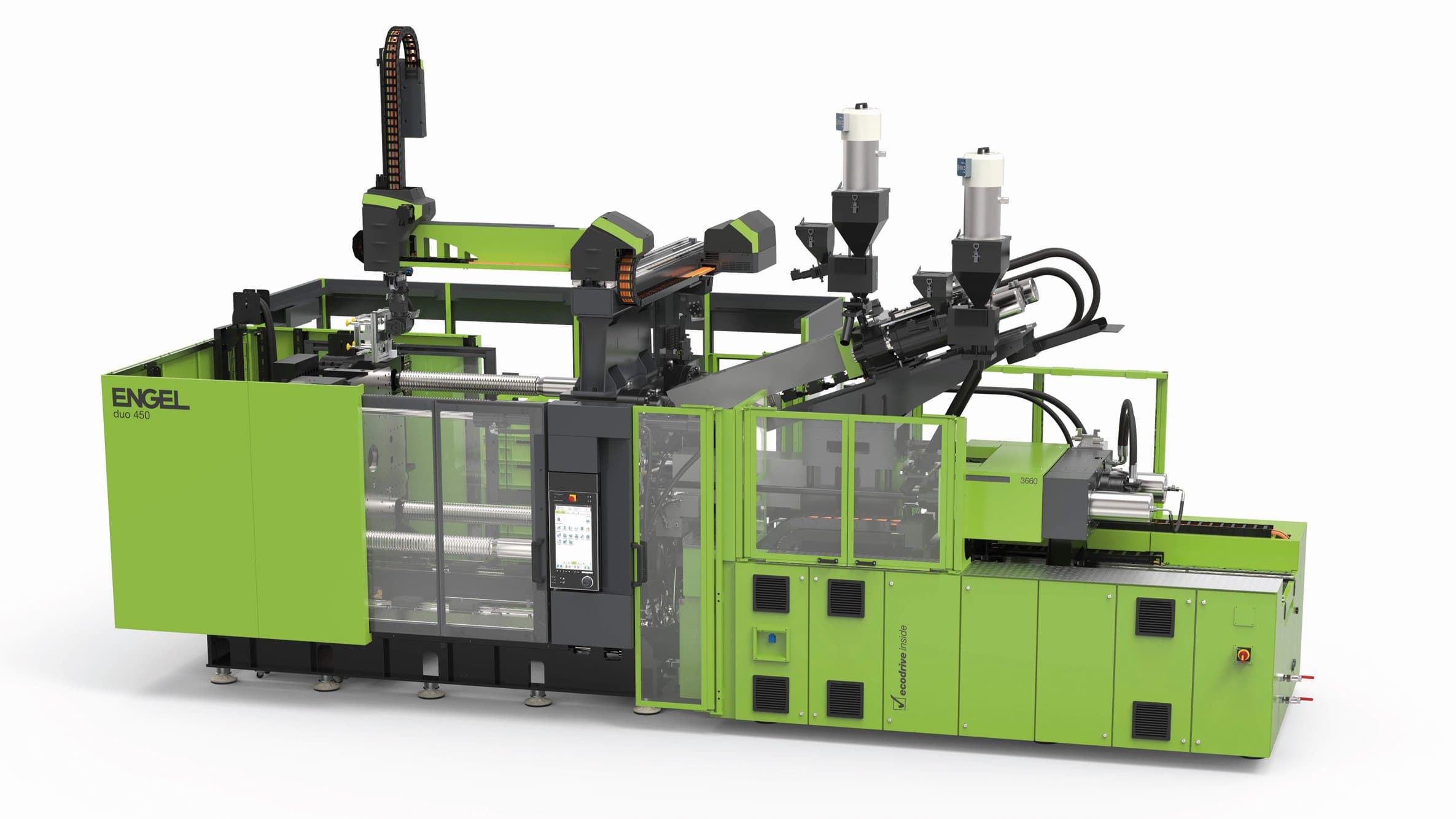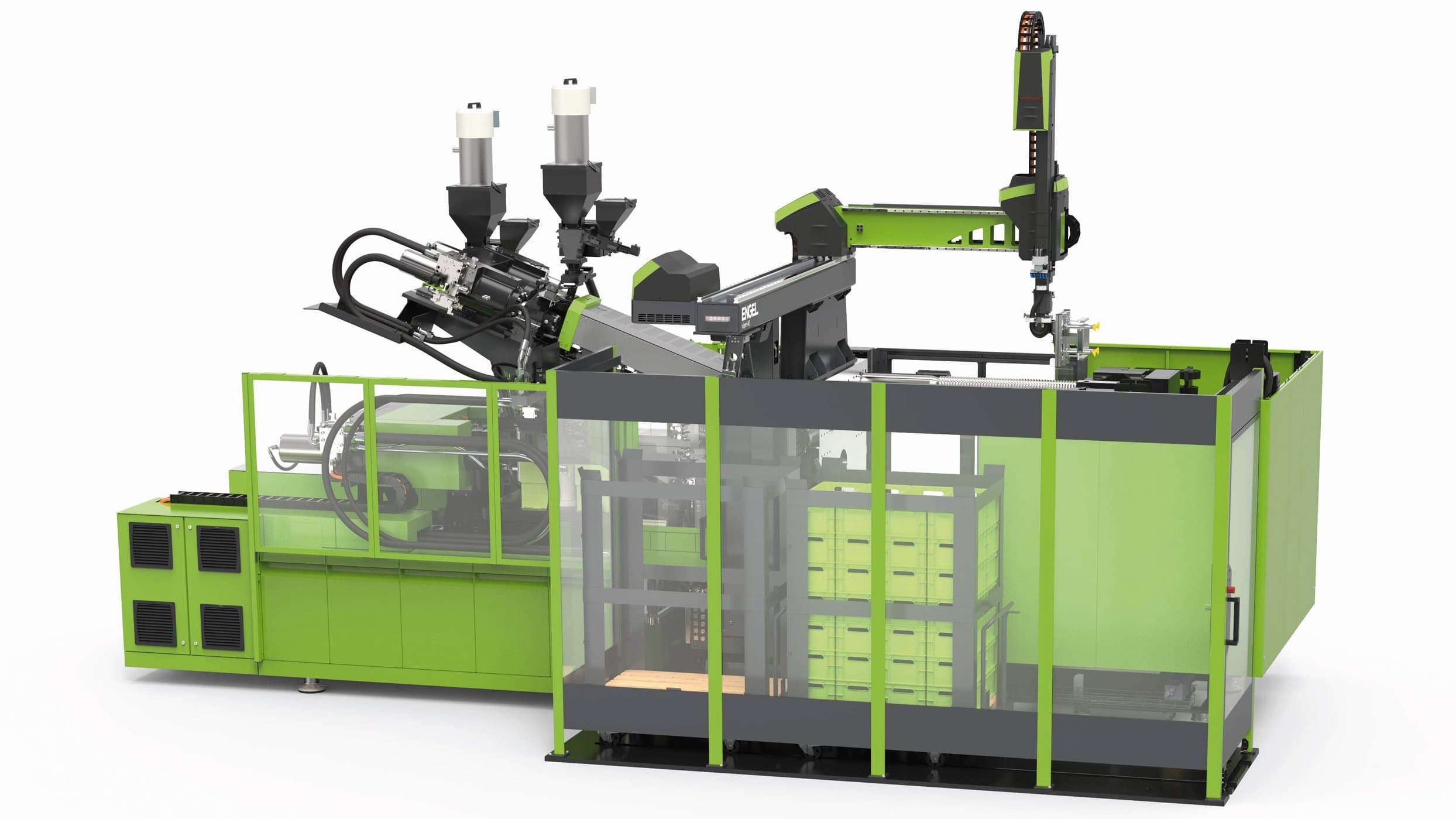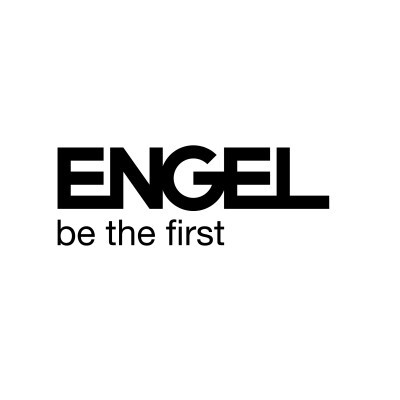Wider use of recycled materials
What contribution can an injection moulding machine manufacturer make to actively support the establishment of a circular economy for plastics? The focus is on processing recycled material, improving process stability, and the trend towards design for recycling.
High share of recycled material due to sandwich injection moulding
Sandwich-moulded components with a core of processed plastics scrap are playing an important role in advancing the circular economy. ENGEL skinmelt makes it possible to achieve high recycled content levels, even when working with complex component geometries. At K 2019 in Düsseldorf in October, ENGEL is manufacturing transport boxes to demonstrate how processors can ensure highly economical production. Due to their shape, the boxes pose a special challenge for sandwich injection moulding. Despite this, a very high share of recycled material of over 50 percent is achieved.
Unlike classic coinjection, the skinmelt process involves fusing the two melts prior to injection. The skin – the virgin material – is first to reach the cavity. It is pushed forward by the inflowing recycled material and pressed against the cavity walls, while the core is filled with recycled material. On the duo dual-platen injection moulding machine exhibited at K, the second plasticising unit for the skin material is located at a sharp angle above the horizontal injection unit inside which the recycled material is melted – a highly space-saving design.
Using recycled material more widely through intelligent assistance
The stability of the injection moulding processes is key to being able to use recycled materials also for up-market products, because recycled materials are naturally subject to greater batch fluctuations than virgin materials. ENGEL masters this challenge with the help of intelligent assistance. During injection, the iQ weight control software from ENGEL's inject 4.0 program adapts the quality-relevant process parameters for each shot individually to the current conditions. This reliably compensates for fluctuations in the raw material, as well as in the ambient conditions, and produces 100 percent good parts. iQ weight control has very successfully and quickly established itself in the processing of virgin materials. The software’s ability to also operate reliably with recycled material was demonstrated by ENGEL and recycling specialist Erema in a comprehensive series of tests. By offering this solution, the door to a significantly wider range of applications for recycled material will be opened. Industry 4.0 is an important enabler for closing material flows.
Considering recycling as early as in product development
Designing for recycling means that the subsequent recycling process is taken into account as early as in the development of a new product, and that the requirements of the circular economy and sustainability are taken into account in the product design. Further examples where this is already working well can be found in the packaging industry and in composite lightweight design among other applications. In the production of thin-walled packaging in the IML (in-mould-labelling) process, for example, there is a trend towards mono-material systems in which the label and pellets are made of the same material.
Wherever you look in composite lightweight design, thermoplastic-based solutions point the way to the circular economy. In the organomelt process, fibre-reinforced prepregs with a thermoplastic matrix such as organic sheets and tapes are heated, inserted into the mould, formed there and directly overmoulded with a thermoplastic from the matrix material's material group. This simplifies the recycling of components at the end of their lifetime.



